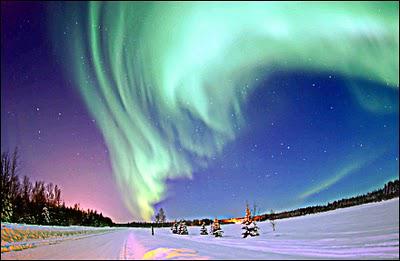Solar wind creates the heliosphere, the huge space of interplanetary matter, which surrounds the solar system. He creates and geomagnetic storms that can disrupt the power grid on Earth, northern lights and the tail of a comet which contains the plasma and is always in the direction of the sun. Magnetosphere protects the earth's surface from electrified particles of solar wind.

Solar wind is a stream of hot plasma ejected by the Sun in all directions (because of the tremendous heat of the Sun's outer layer, solar corona). Under normal conditions, the solar wind comes to the Earth at a speed of around 400 km / s and a density around 5 ions / cc, but during the magnetic storm flows can be several times stronger, and the interplanetary magnetic field, which also originates from the Sun and is associated with the density of sunspots. On his way through the universe, part of the solar wind runs into Earth's magnetosphere, the area of space dominated by Earth's magnetic field. Magnetosphere rotates the solar wind around itself(and around the Earth) at a distance of approximately 70.000 km (impact front is formed at a distance of approximately 12.000 to 15.000 km). Width of the Earth's magnetospheric obstacles to the solar wind is mostly about 190,000 km, while behind the Earth's night side provides a long tail of stretched magnetic field lines. Earth's magnetosphere field lines rotate part of the solar wind toward Earth's magnetic poles.
Although this loss of mass of the Sun and small density of solar wind is almost insignificant, particles moving at high speeds and cause noticeable effects on the bodies in the solar system. Known effects of the solar wind are polar light resulting excitation of atoms in the Earth's atmosphere charged with particles from the sun. Best seen from the northern and southern polar regions (aurora borealis and aurora australis) during the amplification of solar activity.
